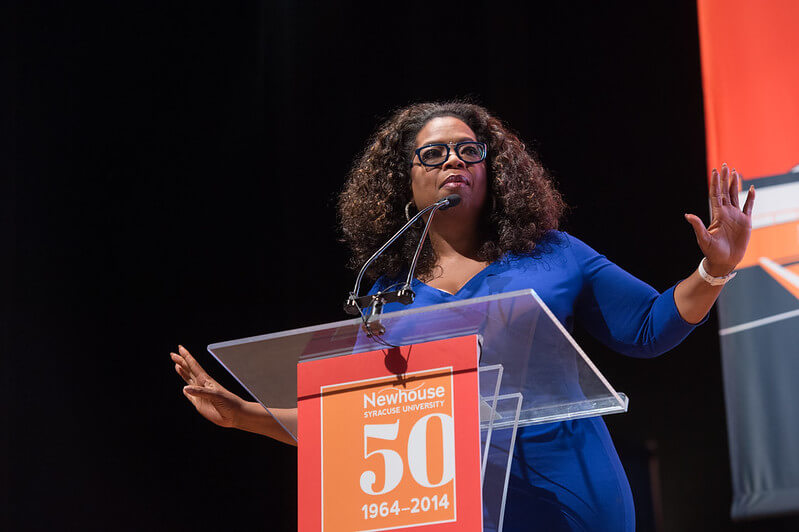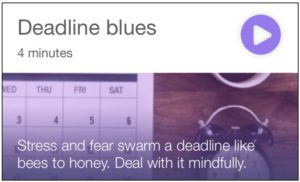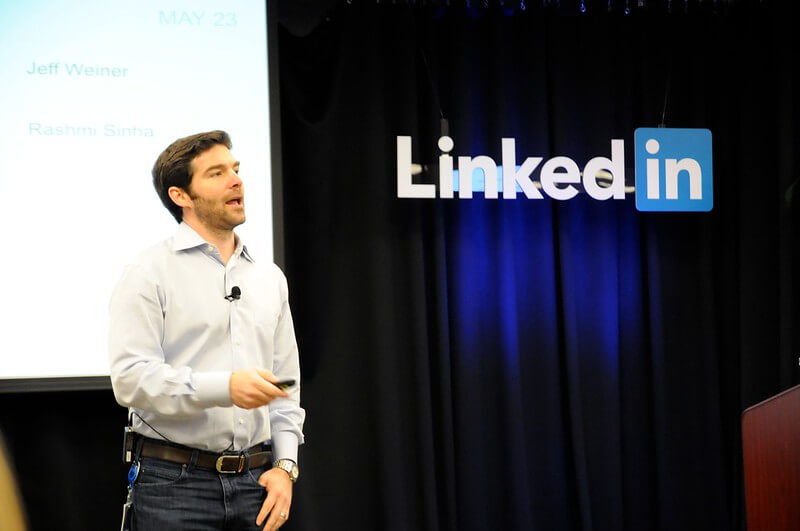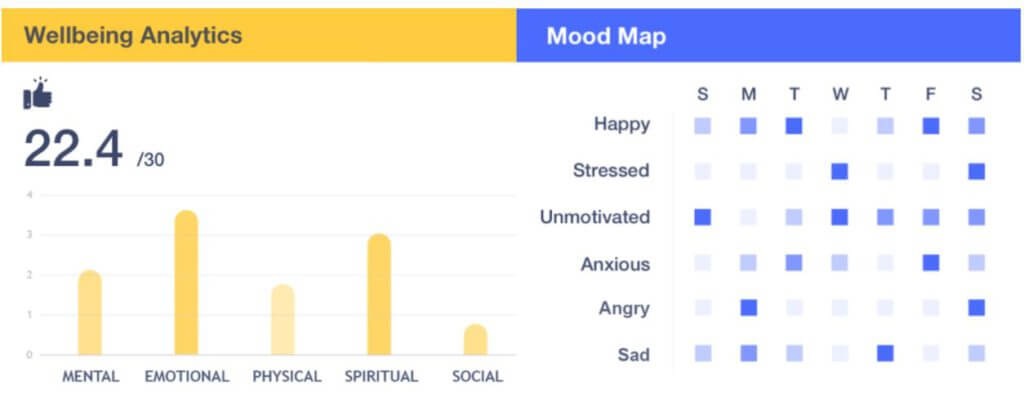The ongoing pandemic has taken a major hit on our mental wellness. Governments around the world have been actively cautioning the masses on the mental health repercussions in the wake of the crisis. It is crucial for organizations to adopt a proactive approach to enhance and measure Corporate Mental Wellness in this new normal before being dealt a “second blow” from the pandemic on their bottom lines and healthcare costs.
The World Health Organization defines health to be “a state of complete physical, mental and social well-being, and not merely the absence of disease or infirmity”. Coined back in 1946, this underlines the importance of a holistic approach to wellness that transcends the focus that we’ve been placing solely on physical health.
Statistics on Stress
A recent report based on pre-pandemic research conducted by Cigna revealed that 87% of employees are stressed, with 12% reporting stress levels to be beyond what they can manage. A separate study by Ginger reported that almost 70% of the employees found the pandemic to the most stressful time of their professional careers, with 91% reporting moderate to extreme stress whilst working from home.
Cigna also reported that stress related illnesses in 6 APAC countries cost a combined US$48 billion; This accounts for almost a fifth of the total healthcare expenditure and a quarter of hospital admissions. In addition, Ginger, reported that in the wake of the pandemic, 43% of employees have become physically ill as a result of work-related stress.
Solution for Corporate Mental Wellness
The stigma that surrounds mental health challenges stifles the much needed discussions and actions on the topic; Many people who need help are either unaware or in denial about their predicament. “So many people live in shame, hiding their struggles, not seeking help. We, as a culture, have not fully acknowledged how much help is needed.” says Oprah Winfrey, renowned talk show host who’s very passionate about the topic of mental health.

The onset of the pandemic has exacerbated the mental health crisis that has always existed in our society; We are also seeing a sharp rise in mental health-related news reports globally. In the words of Arianna Huffington, Founder of the Huffington Post, “The pandemic has exposed the unsustainable ways of working and living that are fueling the current mental health crisis”.
As we trudge along into the new normal, the ubiquity of mental health challenges is putting pressure on organizations to brush aside the stigma and look for long term solutions or risk huge productivity impacts and healthcare costs. The long solution is to build a Culture of Wellness starting from ourselves and our loved ones, moving on to our work teams, communities and organizations. When employees are positive and well, organizations can expect increased productivity, revenue, employee engagement, retention and loyalty, as well as decreased stress, anxiety, depression, attrition and healthcare costs. I’d be sharing 4 tips to create a Culture of Wellness in your organization.
Tip #1: Foster company-wide mindfulness habits
Mindfulness is the mental state of being focused on the present moment and the quieting of the noise from the chaos and distractions around us; it’s not all about meditation. A mindful exercise can be as simple as a short one minute, open-eye, breathing exercise at our desks. Deep breathing activates the parasympathetic nervous system, which promotes calmness and quiets our minds by connecting us closer with our bodies. Mindfulness is very helpful in improving our moods and reducing our stress.

Mindful media consumption – We can practise mindfulness in our social media consumption by becoming more aware of the positive and negative emotions triggered from the posts we browse and therefore learn to curate our feeds instead of just scrolling mindlessly. In doing so, we make a conscious choice to hear from positive people who we really want to keep in touch with or who we really care about.

Screen capture from the MindFi App – Heart hunger
Mindful eating – Eating is another daily activity that can certainly use a dose of mindfulness; we live in a world where food is abundant and most of the time, we are not eating due to hunger, rather, we eat out of boredom or to fill an emotional void. Mindful eating helps us become more aware of our emotional triggers for certain types of food and connects us with our body to empower us with a better sense of our feelings of hunger and fullness.

Screen capture from the MindFi App – Deadline blues
Mindful handling of deadlines – How about deadlines at work? We all have deadlines and they are definitely a source of stress for many of us but we can, again, apply mindfulness to this daily activity and alleviate some of the negative emotions that we experience. Being mindful about our deadlines is about calming the stressors and focusing our minds on the most important tasks at hand, one at a time, to maximize our productivity.
With the knowledge that mindfulness entails short and simple exercises that can be easily integrated into daily activities, how about running a fun wellness challenge for your organization? Like a “steps challenge” for the body, this is simply a “mind challenge” for the mind. With social elements from team collaborations with co-workers and some prizes as incentives, employees would be in for a fun and exciting way to build healthy mental habits.
MindFi’s Global Mastermind Challenge for Corporate Wellness
Tip #2: Develop Mindful Leaders and Managers
Mindful leadership involves managers putting their subordinates first, along with the goal of empowering every employee to succeed at what they are doing.
Wellness First Leadership – A “wellness first” approach to management allows leaders and managers to be aware of and empathetic towards the mental wellness of their subordinates. By inculcating values around wellness as well as building trust and transparency with the team, “wellness first” leaders and managers are able to quickly recognize when employees are facing mental wellness challenges and thus provide the necessary and timely support.
Socially Driven Leadership – It’s hard to grow a strong company culture without social interactions in the workplace. Socially adept leaders and managers actively foster social connections with their subordinates through team bonding activities such as lunches and happy hour sessions; they are likeable, fun to be with, strong communicators, great team players and are role models that the employees look up to.
Compassionate Leadership – Compassion takes leadership to the next level because compassionate leadership entails more than empathy for subordinates; it’s about walking in the shoes of every individual member in the team and genuinely wanting everyone to succeed. Compassionate leaders feel and express genuine gratitude to every member of their teams; they keenly listen to every individual’s aspirations and provide them with what’s necessary to help them reach their goals and make them successful.

CEO of LinkedIn, Jeff Weiner, delivered an inspiring speech on compassionate leadership at Wharton Business School saying “I can tell you with absolute conviction that managing compassionately is not just a better way to build a team, it’s a better way to build a company”.
Tip #3: Identify and Empower Wellness Champions
A wellness champion network is defined by the Society for Human Resource Management to be “a group of employees who work to improve the health and culture of the workplace in conjunction with an employer-sponsored wellness program”. These wellness champions help to promote your wellness goals at their respective locations by sharing insights about wellness and encouraging coworkers to engage in activities that enhance individual wellbeing. They are the advocates, promoters and motivators for your organization’s wellness program.
Identifying Wellness Champions – There are traits that the ideal wellness champion should possess. Firstly, a wellness champion needs to be passionate about wellness and actively practises it on a daily basis; he or she is not just able to talk about the benefits of personal wellness and mindfulness but also share personal experiences and stories. Next, it’s helpful for these champions to have some level of social influence in the organization when it comes to organizing events and getting the employees excited about an upcoming corporate wellness challenge. Last but not least, wellness champions need to communicate a lot, therefore being confident and vocal helps them get your organization’s wellness message across to the employees more effectively.
Managing Wellness Champions – After identifying your organization’s wellness champions, it’s time to move on to the game plan and how things are going to run. Organizations need to start by clearly defining the roles and responsibilities of the wellness champion network as well as set some KPIs. Responsibilities for the wellness champion network could include organizing regular wellness related events in the organization, educating coworkers on wellness as well as working closely with HR teams on achieving the organization’s wellness goals. A wellness champion network is like a department, an extension of HR; organizations need to establish the communications strategy with and within the network of wellness champions to allow the fledgling network to interact, get feedback, improve and grow over time. With all the extra work for your wellness champions, it’s important to keep them motivated; initiatives like giving recognition to your champions over a company town hall, exclusive company wellness champion shirts, or even something from your organization’s benefits programs can help to keep your wellness champion network going strong.
Tip #4: Measure and Manage Corporate Wellness
What you cannot measure, you cannot manage. Periodically administering employee engagement surveys or wellness assessments can help evaluate the effectiveness of your organization’s corporate wellness programs. With the use of digitized corporate wellness solutions, employee wellness data can be broken down by departments, locations, age groups, etc to provide actionable insights for optimizing Human Resources management across the organization.

MindFi’s Corporate Wellness Analytics: Wellbeing Dimensions and Mood Heatmap
Summary
Building a culture of wellness in your organization is not an overnight gig but a long term endeavor. In Arianna Huffington’s words: “Employers are being forced to admit what working parents have always known – that parenting is a round-the-clock job.” Corporate Wellness is like parenting; strong cultures develop and evolve over time, similar to a corporate culture of wellness for organizations.
MindFi’s Webinar on Enhancing and Measuring Corporate Wellness in the New Normal














